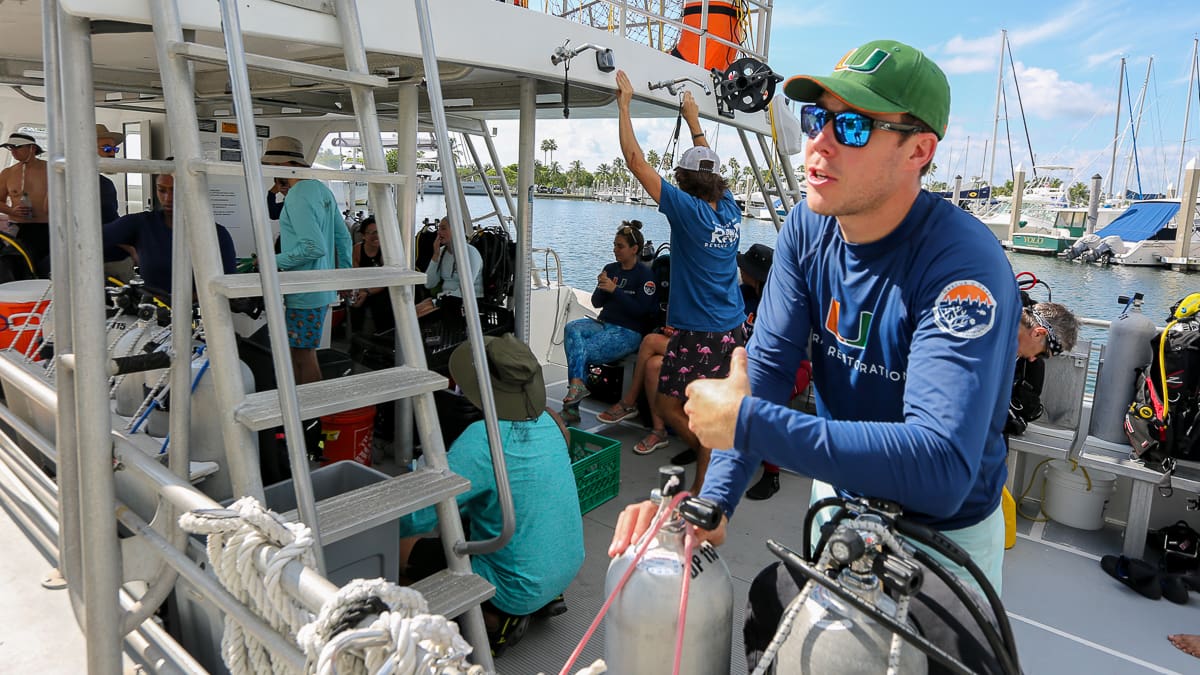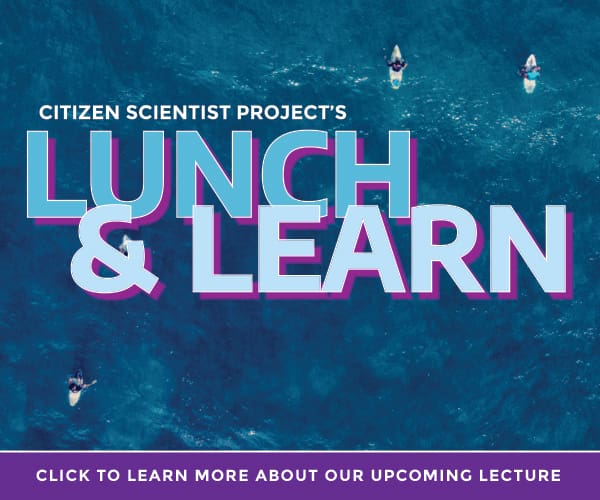With record ocean water temperatures and fearing the worst, researchers at the University of Miami’s Rosenstiel School rescued some heat-stressed staghorn coral from its own nursery beds earlier this week.
Some romantic soul music may get the credit.
The saved staghorn coral spawned at the UM’s lab on Virginia Key as marine biologists played Barry White and Marvin Gaye from a cell phone.
“There were some lovely tunes going to try and get the mood going,” said Dalton Hesley, a senior research associate.
“It’s just good news, because we weren’t sure if the heat stress would have been overwhelming to the point that they couldn’t spawn successfully.”
Hesley led members of Rosenstiel’s citizen science program that lets the public get involved in scientific research.
Invest in Local News for Your Town. Your Gift is tax-deductible
This trip’s goal? Determine if bleaching was occurring in Biscayne Bay waters off Key Biscayne and to plant and collect corals for research to determine if they are resistant to these record water temperatures.
Hesley said so far, reefs off of Miami are holding their own with minimal bleaching. But summer is far from over.
This summer’s temperatures – 101 degrees Fahrenheit recorded off of the Florida Keys last month – have had dire consequences on the reefs off of the coast.

“There is a current ongoing anticipated bleaching event underway. In fact, it has heavily impacted the Florida Keys, bringing many coral scientists to tears because we’ve never really seen anything like this,” Hesley said.
Bleaching is the death knell for coral. When reefs die it has a domino effect: thousands of species depend on reefs – from the tiniest crustacean to sea turtles, sharks and eagle rays.
Rosenstiel’s reef restoration program is the brainchild of Dr. Diego Lirman, who learned what is now known as “coral gardening.”
Lirman, a U.M. associate professor, started with 20 initial corals. Now, he tends to gardens with over 4,000.
The citizen scientists were on board to visit Lirman’s nurseries. They would actually plant – using a specialized cement – baby corals. They would also clean the man made structures in which they grow and collect samples of 24 different genotypes.
The idea – is to have a stable of ‘hardened’ corals that could restore reefs in case of an extinction event, Hesley said.

Right now, ocean temperatures have stabilized around 87 or 88 degrees Fahrenheit. Hesley said the stress isn’t one day of super hot ocean temperatures, but sustained days or weeks of such temperatures.
NOAA has put out alerts for both Miami waters and the Florida Keys.
“August is a very warm month for our oceans and coral reefs. So that is making this time point very critical for us to do everything we can while we can,” Hesley said.
The frisky staghorn back at the lab were taken from one of these nurseries as water temperatures started looking bleak last month.
“But again, the silver lining is that we still saw that successful spawning event and had successful fertilization,” Hesley said. “So the babies were settled and now we’re being reared in the lab.”




